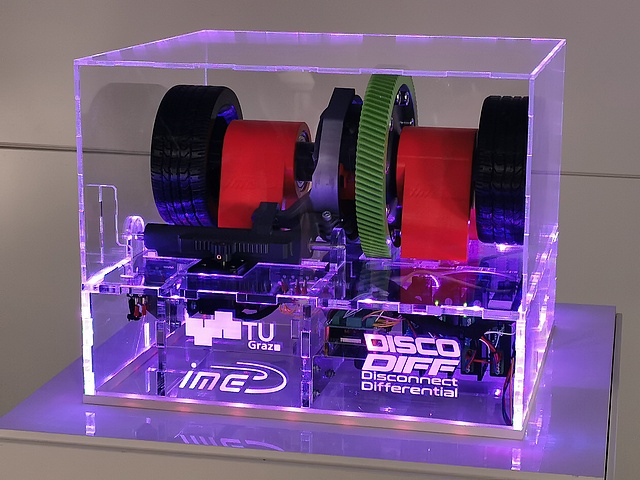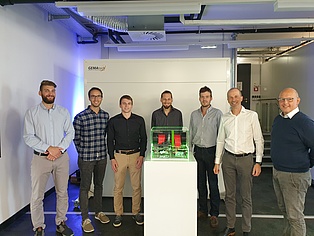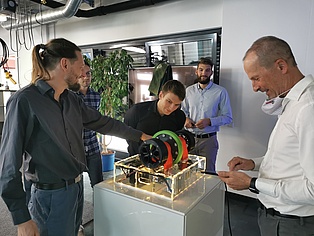The Disconnect-Differential: A low cost - high impact all-wheel-drive (AWD) disconnect system
Nearly all AWD vehicles on the market today feature some sort of disconnect mechanism in their powertrain due to efficiency requirements.
The invention presented herein aims to reduce the cost of such a system, while also reducing the remaining power dissipation in comparison to current systems. A diverse group of students, researchers and experienced industry specialists at the Institute of Machine Components and Methods of Development at the Graz University of Technology teamed up to bring an unconventional idea to life.
The Invention
The presented disconnect differential features a simple mechanism that enables the direct utilisation of the differential’s bevel gears as shifting elements. This eliminates the need for costly additional torque transferring elements like a dog clutch or sleeve, while reducing the remaining drag torque to levels below known disconnect systems. Switching the torque transfer is executed by axially moving a shifting collar, which can be realised by various available off-the-shelf actuators.
Development Process
A prototype design of the disconnect differential was derived from an existing series production bevel gear differential, focusing on simplicity and ease of manufacturing. The switching operation in various service conditions was examined using analytic models, as well as a physical technology demonstrator, that was built using rapid prototyping methods.
Finally, the developed system was compared to state-of-the-art technology in terms of weight, size and loss reduction amongst other criteria. The improvements were illustrated and possible combinations and applications for this technology were pointed out.
Institut für Maschinenelemente und Entwicklungsmethodik
Inffeldgasse 21b/II
8010 Graz
Tel.: +43 316 873 7361
Fax: +43 316 873 7370
Email: ime@tugraz.at
Web: www.ime.tugraz.at



